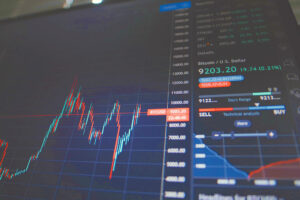S&P affirms PHL’s ‘BBB+’ rating

By Keisha B. Ta-asan, Reporter
S&P GLOBAL RATINGS affirmed the Philippines’ investment grade rating on Wednesday, citing the economy’s “above-average” growth potential.
“The ratings on the Philippines reflect the country’s above-average economic growth potential, which should drive constructive development outcomes and underpin broader credit metrics,” it said in a statement.
The rating company also kept its “stable” outlook for the economy. “The ‘stable’ outlook reflects our expectation that the Philippine economy will maintain healthy growth rates and the fiscal performance will materially improve over the next 24 months.”
Finance Secretary Benjamin E. Diokno said the government of President Ferdinand R. Marcos, Jr. would pursue fiscal consolidation and introduce policies to strengthen the country’s economic position.
“In a sea of downgrades, the international rating agencies continue to affirm their confidence in the Philippine economy’s macroeconomic fundamentals,” he said in a statement. “We continue to pursue the Road to A.”
The “BBB+” sovereign rating is a notch below the “A”-level grade targeted by the government, while a “stable” outlook means the rating is likely to be kept in the next six months to two years.
The debt watcher also kept its A-2 short-term credit rating for the Philippines. It last affirmed its credit rating for the country in November 2022 with the same “stable” outlook.
S&P said economic recovery in the Philippines remained robust after the pandemic, but near-term global risks persist.
The Philippine economy is expected to grow by 5.4% in 2023, slower than 7.6% in 2022 and the 6-7% target this year. The rating company said the slowdown “mainly reflects the impact of external macroeconomic developments and a high base.”
The Philippine economy grew by 5.9% in the third quarter, faster than 4.3% in the second quarter. For the nine months to September, economic output averaged 5.5%, still below the government’s 6-7% goal.
Elevated inflation will likely constrain private consumption, S&P said.
Headline inflation dropped to a three-month low of 4.9% in October from 6.1% in September. This brought the year-to-date average to 6.4%, still above the central bank’s 6% forecast.
October marked the 19th straight month that inflation breached the central bank’s 2-4% target.
A global economic slowdown, including in the country’s biggest trading partners such as China and the US, will also drag Philippine growth.
FISCAL GAP“Nonetheless, economic growth in the Philippines should be well above the average for peers at a similar level of development, on a 10-year weighted average per capita basis,” S&P said, adding that the country has a strong record of high and stable growth.
Philippine gross domestic product (GDP) per capita could rise to $3,903 this year and $4,273 next year. Real GDP per capita growth could average about 4.4% each year over 2023-2026, it said.
“Solid household and corporate balance sheets and sizable remittance inflows underpin the Philippine economy’s positive medium-term trajectory,” S&P said. “Ongoing efforts to address infrastructure gaps, and improvements in the business climate through regulatory and tax reforms should also support growth in economic productivity.”
The country’s fiscal deficit may also narrow to 3.8% of GDP this year from 4.4% last year.
“We believe the normalization of economic growth in the Philippines after a strong recovery over the past two years will help to lower the general government deficit to 3.8% of GDP in 2023, from 4.4% the year before,” it said.
But restoring the fiscal and debt settings to pre-pandemic levels could be challenging over the next 12 to 24 months due to elevated inflation, tight monetary policies in developed countries and supply-chain disruptions.
The credit rater forecasts the general state deficit to average at 2.7% of GDP in the next three years, and the net general state debt to gradually come down to about 41% by 2026 as fiscal consolidation takes hold.
The government of Mr. Marcos seeks to reduce the National Government deficit-to-GDP ratio to 3% by 2028 under its medium-term fiscal framework.
Meanwhile, S&P scored the Philippines banking industry a 5, with 1 being the highest country risk assessment and 10 the lowest.
“The banking sector benefits from stable macroeconomic and employment conditions. In our opinion, the sector’s asset quality will stay broadly stable over the next two years,” it said.
But a moderate increase in nonperforming loans is likely amid higher interest rates and inflation.
The Bangko Sentral ng Pilipinas (BSP) left its key interest rate at a 16-year high of 6.5% on Nov. 16. The Monetary Board raised borrowing costs by 450 basis points from May 2022 to October 2023 to tame inflation.
“With inflation showing signs of gradually declining in recent months, interest rate hikes may slow down or pause,” S&P said.
“We regard the BSP’s ability to support sustainable growth while attenuating economic or financial shocks to be broadly neutral to our rating,” it said. “This reflects the central bank’s sound record in keeping inflation low and its history of independence.”
The Philippines falls short of the “A” rating from three major debt watchers, with a “Baa2” from Moody’s Investors Service, “BBB+” from S&P and “BBB” from Fitch Ratings.
All three have assigned a “stable” outlook for the Philippines.




